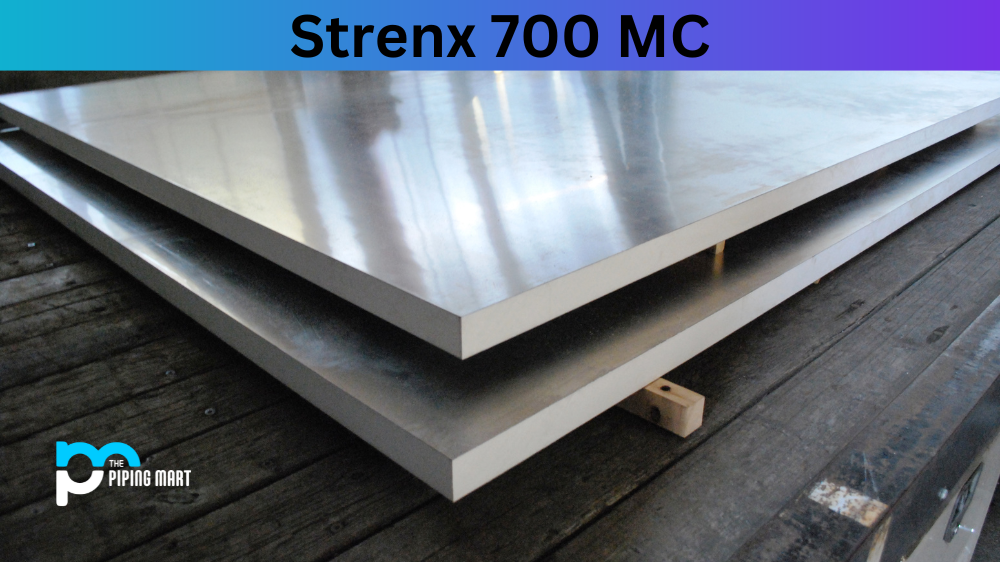UNS S43100 is a type of martensitic stainless steel alloy. It’s composed mainly of iron, chromium, and nickel, with small amounts of silicon, phosphorus, sulfur, and manganese. It’s magnetic and has good corrosion resistance. In this article, we’ll discuss the composition and physical and mechanical properties of 431 stainless steel and its uses.
431 Stainless Steel Composition
The composition of 431 ss is as follows: iron (Fe) 74-78%, chromium (Cr) 15-17%, nickel (Ni) 1-1.5%, silicon (Si) 0.75%, phosphorus (P) 0.04%, sulfur (S) 0.03%, manganese (Mn) 0.75%.
| Grade 431 stainless steel |
C |
Mn |
Si |
P |
S |
Cr |
Ni |
|
|
431 |
min. max. |
– 0.20 |
– 1 |
– 1 |
– 0.04 |
– 0.03 |
15 17 |
1.25 2.50 |
431 Stainless Steel Physical Properties
One of the main benefits of stainless steel 431 is its excellent corrosion resistance due to the presence of high chromium content in its composition. It also has good ductility and formability, making it easy to shape into different objects and components. Additionally, it has good wear resistance, which makes it a preferred material for many industries, such as automotive manufacturing or food processing equipment, where parts are subject to wear from constant use or exposure to corrosive environments.
|
Grade |
Density (kg/m3) |
Elastic Modulus (GPa) |
Mean Coefficient of Thermal Expansion (μm/m/°C) |
Thermal Conductivity (W/m.K) |
Specific Heat |
Electrical Resistivity (nΩ.m) |
|||
|
0-100°C |
0-315°C |
0-538°C |
at 100°C |
at 500°C |
|||||
|
431 |
7800 |
200 |
10.2 |
12.1 |
– |
20.2 |
– |
460 |
720 |
431 Stainless Steel Mechanical Properties
In terms of mechanical properties, 431 alloy has a tensile strength between 620 MPa and 780 MPa, an ultimate strength between 520 MPa and 680 MPa, an elongation at the break between 30% and 40%, a modulus of elasticity around 190 GPa and a yield strength between 240MPa and 380MPa depending on the condition.
|
Tempering Temperature (°C) |
Tensile Strength (MPa) |
Yield Strength 0.2% Proof (MPa) |
Elongation (% in 50mm) |
Hardness Brinell (HB) |
Impact Charpy V (J) |
|
Annealed * |
862 |
655 |
20 |
285 max |
– |
|
204 |
1345 |
1055 |
20 |
388 |
50 |
|
316 |
1295 |
1035 |
19 |
375 |
53 |
|
427 |
1350 |
1080 |
19 |
388 |
# |
|
538 |
1140 |
965 |
19 |
321 |
# |
|
593 |
1015 |
770 |
20 |
293 |
64 |
|
650 |
960 |
695 |
20 |
277 |
84 |
431 Stainless Steel Equivalent
|
Grade |
UNS No |
Old British |
Euronorm |
Swedish SS |
Japanese JIS |
||
|
BS |
En |
No |
Name |
||||
|
431 |
S43100 |
431S29 |
57 |
1.4057 |
X17CrNi16-2 |
2321 |
SUS 431 |
431 Stainless Steel Uses
Due to its combination of physical properties such as corrosion resistance, formability, and wear resistance, grade 431 is used in many industries, including automotive manufacturing, where it can be found in exhaust systems or other parts that require good corrosion resistance but also need to be strong enough not to break easily under pressure or stress from daily use; food processing equipment where parts may be exposed to corrosive chemicals but still need to be able to withstand regular usage; surgical instruments that require both strength and corrosion resistance; or marine applications like pumps or valves that must be able to withstand frequent exposure to saltwater without corroding quickly over time.
Conclusion
Overall, 431 stainless steel is an excellent choice for applications requiring good corrosion resistance combined with high strength at an affordable cost. Its composition allows it to maintain its physical properties even when exposed to harsh conditions while still providing superior wear resistance compared to other materials available on the market today. Whether you need it for automotive parts, food processing equipment or marine applications – 431 stainless steel can provide you with the performance you need at an affordable price point!
Meet Heer, a dynamic and driven writer learning tricks of her trade in the metal industry. With a background in Digital Marketing, Heer brings a unique perspective to her writing, sharing valuable insights. Apart from blogging she like reading and hiking.




